The Cherry G80-3494 MX Board Silent Mechanical Keyboard Review: Updating a PC Classic
by E. Fylladitakis on September 20, 2017 8:00 AM EST- Posted in
- Peripherals
- Keyboard
- Cherry MX
- Mechanical Keyboards
The Cherry G80-3494 MX Board Silent Mechanical Keyboard
A first look at the Cherry G80-3494 MX Board Silent reveals an oversized, tall keyboard with a plastic body, with the only thing visually separating it from common 80s keyboards being its black color. It takes a closer inspection by an advanced user to reveal that this is a high quality mechanical keyboard, or an experienced eye to recognize the legendary Cherry G80 design.
We received the US layout version of the Cherry G80-3494 MX Board Silent. It adheres fully to the 104 keys ANSI layout, without any extra keys or modifications. It has a 6.25× Spacebar and seven 1.25× bottom row keys. Cherry is using a classic font on the keycaps, with the letters identical to their first G80 keyboards from the early 90’s but with sharper punctuation marks. There are no extra keys, no keystroke combinations, not any kind of advanced functions.
The Cherry G80-3494 MX Board Silent is a relatively tall keyboard but not too tall, designed for maximum typing comfort. It is just tall enough to allow for comfortable typing without the user’s wrists touching the desk or the keyboard. For long typing sessions though, a proper wrist rest will most likely be a necessity to professionals.
Beneath the keyboard we find only two small tilt adjustment feet. The feet are made of clear plastic. Despite their size, they are surprisingly good at holding the large keyboard firmly in place.
Removing some of the keycaps reveals the new Cherry MX Silent switches. These switches are the new variant of the original Cherry MX linear switches that have been redesigned to limit their noise output, which can be a major problem in some applications. Last year we saw the first commercial keyboards featuring these switches when we reviewed the Corsair Strafe RGB. Our Cherry G80-3494 MX Board Silent sample features the black variant of the switch, which is a little stiffer.
Opening up the plastic body of the Cherry G80-3494 MX Board Silent is very easy, as there are hardly any screws to be found on the keyboard. Almost everything is held together with plastic locks and clips. A small screwdriver or other similar tool is more than enough to undo the clips and crack open the plastic body of the keyboard. Inside the keyboard we found a classic black PCB with the mechanical switches attached to it.
There is nothing advanced on this PCB; there are only the switches and a few passive components, with most of them being classic film resistors. A basic USB controller chip can be found on the small green PCB at the top right side of the keyboard, where the three indicator LEDs are. There is no onboard memory or advanced microcontrollers to be found here, as they would not serve any purpose and counter this keyboard’s intended design, which is based on maximizing its reliability.
As best as anyone at AnandTech can recall, this is the first mechanical keyboard that we have seen to not have a metal frame/support for the switches. Instead it relies entirely on the PCB for mechanical cohesion. It probably is not as resistant against heavy physical blows, yet it should be more than sufficiently sturdy for typical everyday use. What frustrated us is the extensive dead space inside the keyboard’s plastic body, which, in an example of just how far technology has progressed in the last couple of decades, is enough space to fit an entire modern low-power PC. Cherry obviously wanted to keep the keyboard’s frame unchanged as it has been out for decades but, on the other hand, that is a lot of space being wasted there.


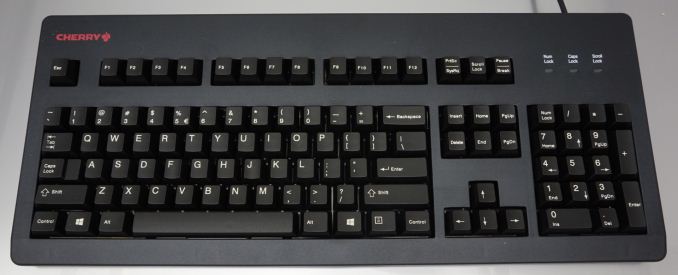
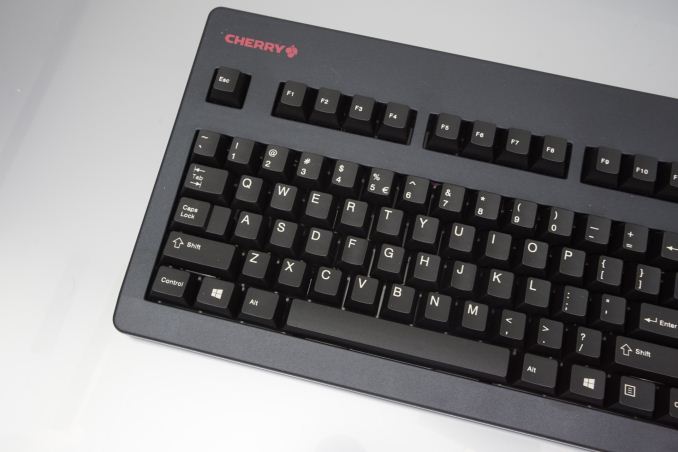
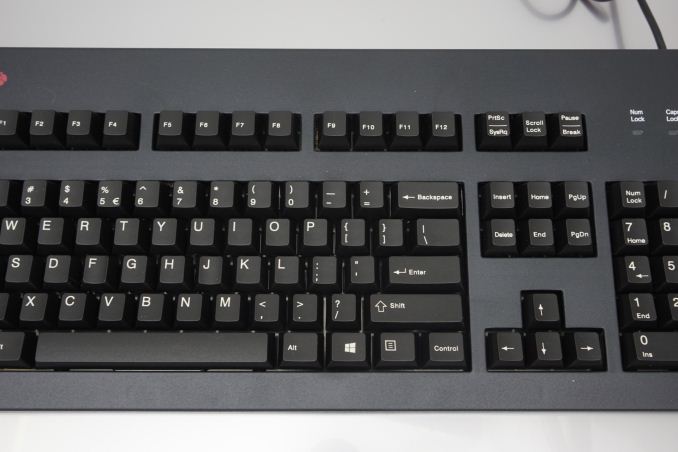
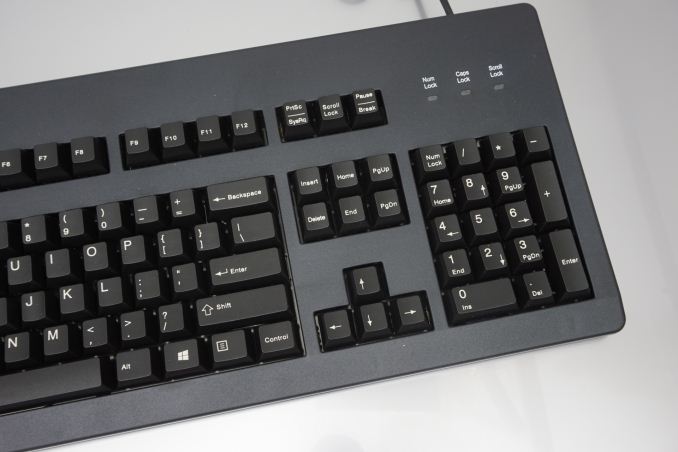
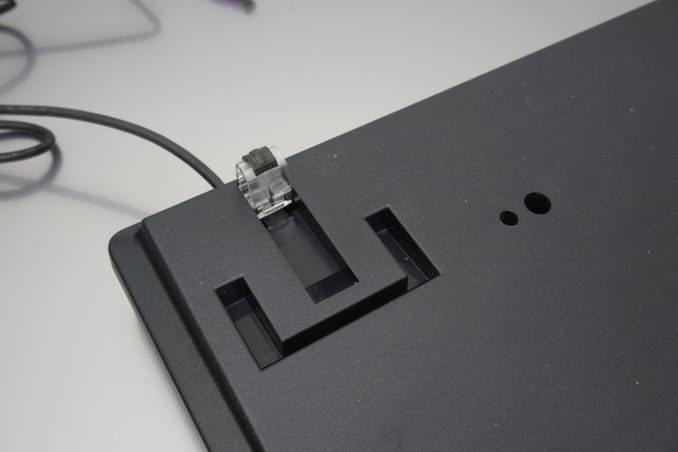

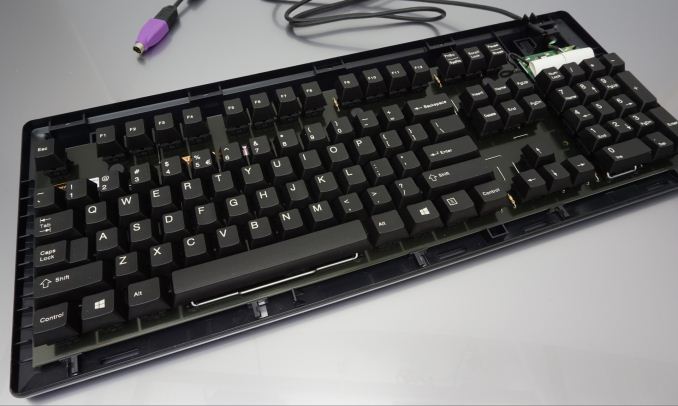








51 Comments
View All Comments
bigboxes - Thursday, September 21, 2017 - link
I love my G80-3000 keyboard. So much so that I have two. They have MX Blue switches and the noise doesn't bother me. That being said, I would to test drive one in person. I'm a minimalist. That is I love not having all the extra crap on my keyboard. Simple and reliable.Lord of the Bored - Thursday, September 21, 2017 - link
" What frustrated us is the extensive dead space inside the keyboard’s plastic body, which, in an example of just how far technology has progressed in the last couple of decades, is enough space to fit an entire modern low-power PC. "Can anyone say "next project"?
preamp - Friday, November 17, 2017 - link
Been there, done that. http://preamp.org/mods/raspcherry-pi#englisherple2 - Thursday, September 21, 2017 - link
When did the first Cherry mechanical keyboard cone out? Was it before the original buckling spring patent was filed on Aug 30, 1977? The Model F keyboard was made from 1981 through 1984 (?), so I'm not sure who invented what in the mechanics keyboard world.Findecanor - Thursday, September 21, 2017 - link
Cherry made other mechanical key switches before 1977, yes.Cherry MX is from 1983 and is the successor to Cherry M9.
FunBunny2 - Thursday, September 21, 2017 - link
-- Was it before the original buckling spring patent was filed on Aug 30, 1977?if you check the Wiki, you'll see that the IBM keyboard is not a mechanical switch keyboard, but a membrane keyboard with a novel actuation. nothing in common with Cherry or any other mechanical switch.
Findecanor - Saturday, September 23, 2017 - link
The 1977 patent covers the switch design in the Model F, which has a buckling spring switch that uses capacitative sensing of a pivoting plate on a circuit board. The Model M has membranes.What constitutes "mechanical" can be, and has been, debated endlessly. I would say that "catastrophic buckling" combined with the pivot of the foot is a basic mechanism.
Beaver M. - Saturday, September 23, 2017 - link
Would be interesting, if it had illumination. Cherry has always had quite an aversion against illuminated keys, except on their relatively new "gaming" models.Sad!
Zim - Tuesday, September 26, 2017 - link
Problem: this looks like a $30 keyboard. Solution: add stupid looking back-lighting. Result: something that looks a $20 keyboard.Beaver M. - Thursday, September 28, 2017 - link
You seriously think back lighting is just for show?Ohhhhkaaaay.